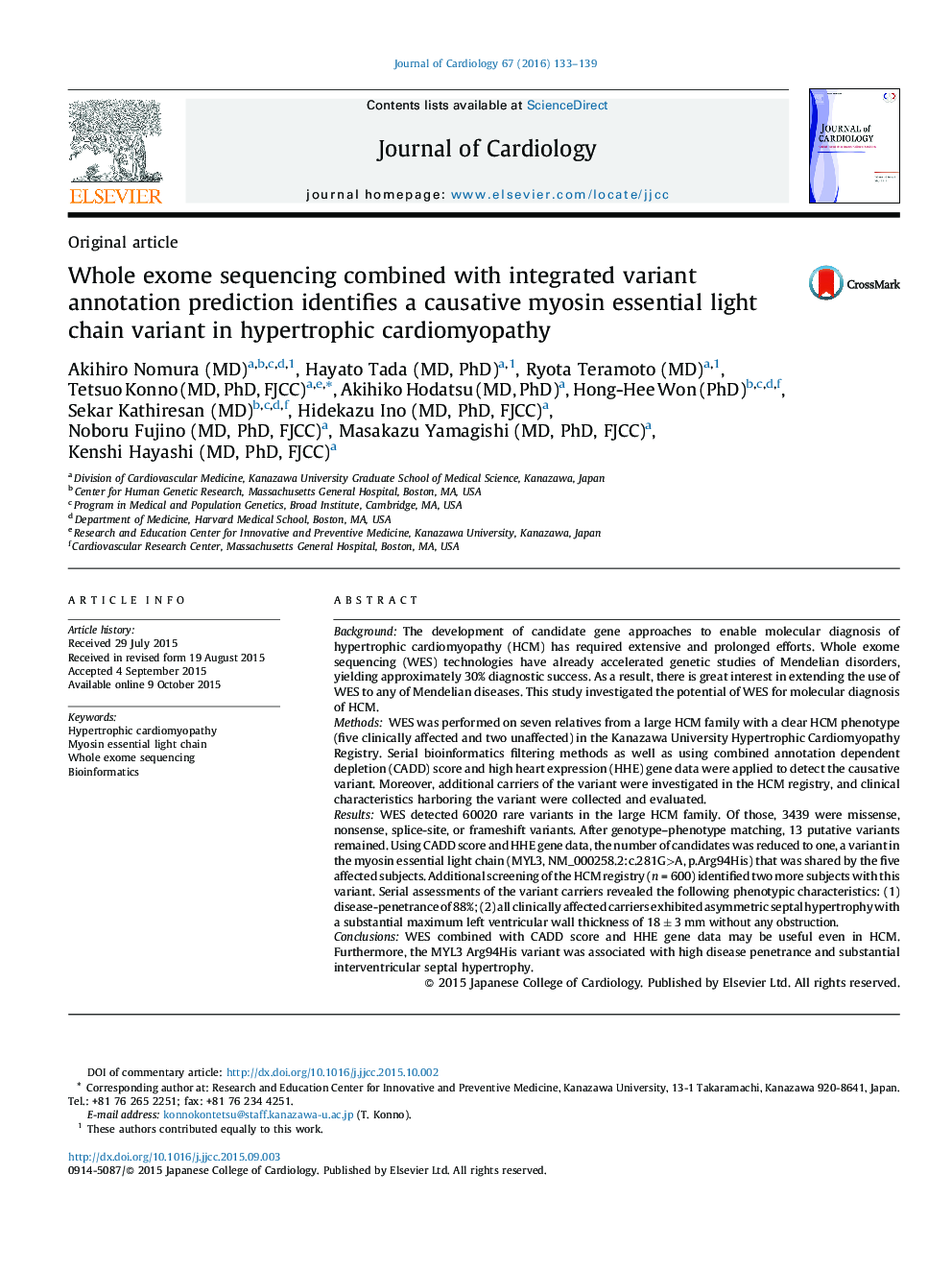| Article ID | Journal | Published Year | Pages | File Type |
|---|---|---|---|---|
| 2962821 | Journal of Cardiology | 2016 | 7 Pages |
BackgroundThe development of candidate gene approaches to enable molecular diagnosis of hypertrophic cardiomyopathy (HCM) has required extensive and prolonged efforts. Whole exome sequencing (WES) technologies have already accelerated genetic studies of Mendelian disorders, yielding approximately 30% diagnostic success. As a result, there is great interest in extending the use of WES to any of Mendelian diseases. This study investigated the potential of WES for molecular diagnosis of HCM.MethodsWES was performed on seven relatives from a large HCM family with a clear HCM phenotype (five clinically affected and two unaffected) in the Kanazawa University Hypertrophic Cardiomyopathy Registry. Serial bioinformatics filtering methods as well as using combined annotation dependent depletion (CADD) score and high heart expression (HHE) gene data were applied to detect the causative variant. Moreover, additional carriers of the variant were investigated in the HCM registry, and clinical characteristics harboring the variant were collected and evaluated.ResultsWES detected 60020 rare variants in the large HCM family. Of those, 3439 were missense, nonsense, splice-site, or frameshift variants. After genotype–phenotype matching, 13 putative variants remained. Using CADD score and HHE gene data, the number of candidates was reduced to one, a variant in the myosin essential light chain (MYL3, NM_000258.2:c.281G>A, p.Arg94His) that was shared by the five affected subjects. Additional screening of the HCM registry (n = 600) identified two more subjects with this variant. Serial assessments of the variant carriers revealed the following phenotypic characteristics: (1) disease-penetrance of 88%; (2) all clinically affected carriers exhibited asymmetric septal hypertrophy with a substantial maximum left ventricular wall thickness of 18 ± 3 mm without any obstruction.ConclusionsWES combined with CADD score and HHE gene data may be useful even in HCM. Furthermore, the MYL3 Arg94His variant was associated with high disease penetrance and substantial interventricular septal hypertrophy.
